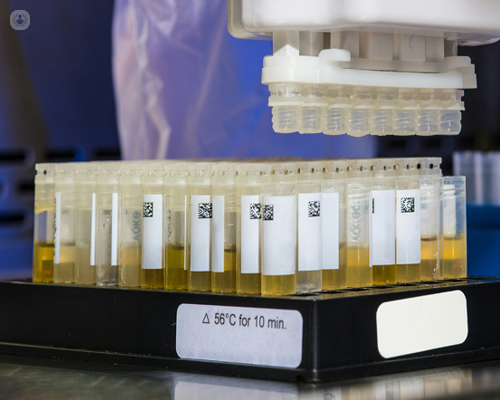Opioids
What’s being analysed?
The test for opioids measures the presence and concentration of opioids, a class of drugs commonly used for pain management, in the bloodstream or urine.

What does the result signify?
The result of the test for opioids indicates whether opioids are present in the body and at what concentration. Positive results may suggest opioid use or exposure.
Why conduct the analysis?
The analysis is performed to monitor opioid therapy, screen for opioid misuse or abuse, diagnose opioid overdose, or assess opioid exposure in cases of suspected poisoning.
When to conduct the analysis?
The test for opioids may be requested when patients present with symptoms suggestive of opioid intoxication, overdose, or withdrawal, or as part of routine drug screening protocols.
What sample is required?
Samples commonly used for opioid testing include blood and urine specimens. The choice of sample depends on factors such as the purpose of the test and the duration of opioid exposure.
Is any prior preparation necessary?
No specific prior preparation is usually necessary for an opioid test. However, patients should disclose any prescription or over-the-counter medications they are taking, as certain substances may interfere with test results.
How is it used?
Opioid testing helps healthcare providers assess:
- opioid use
- monitor therapy compliance
- detect opioid misuse or abuse, and;
- guide treatment decisions for opioid-related disorders.
What are the normal values?
Normal values for opioids testing depend on the specific opioid being measured and the reference standards used by the laboratory conducting the analysis. In general, opioids should not be present in the absence of prescribed therapy.
What does it mean to have altered values?
Altered values in opioid testing, such as positive results in the absence of prescribed therapy or unexpected concentrations, may indicate opioid misuse, abuse, overdose, or unintentional exposure.
Opioids values table
| Opioid levels | Interpretation |
| Normal | Absence of opioids in the absence of prescribed therapy |
| Positive | Presence of opioids, may indicate use, misuse, or exposure |
Please note that interpretation of test results should be done in conjunction with clinical evaluation by a qualified healthcare professional.